Wallpaper is cool again, y’all! I recently wall papered one wall in our master bedroom, and it’s seriously one of my favorite DIY projects I’ve done in a long time. It’s kind of like vaccuming, it makes a big impact in a little mount of time. A lot of bang for your buck, if you will. One wall including 6 cut outs and one large cut for a window took me less than 3 hours. Truth. The best wallpapers? Temporary! Self Adhesive or removable, this kind of wallpaper goes by a few names these days. It is a glorious invention for people who like to change their mind. The wall paper can peel right off without messing up your walls. Temporary wallpaper even works well in rentals. So, I showed you the big master bedroom reveal a few days ago…
Today, I want to share some tips and tricks for putting up temporary wall paper. For starters, I used Tempaper Peonies Noir. Also fair to note that via the Tempaper site, they say not to apply wall paper to textured walls. Oopsie. I’ve got a toddler and an infant, and no time to un texture my walls. Honestly though, I have lightly textured walls and it turned out great. If you press really hard and look super close up, you can see where the texture pokes through. More deets and pics below.
UPDATE: If I could do it over again, I would de texture my wall. Also fair to note that if you are using a dark background wall paper, I would suggest painting your wall a dark shade. If you leave your wall white there is no room for error if the paper shifts or shrinks after you apply, and you might be able to see small white strips.
Here are the tools you will need to hang up removable wall paper
- temporary wall paper
- metal straight edge
- xacto knife
- scissors
- screwdriver
- ruler
- step ladder
Start by taking switches and plates off of the wall with a screw driver. I started on the right side of my wall only because the one big window is on the left side, and I was scared, ha! I started with the roll of wall paper on the floor below me and pulled a strip up to the ceiling. Stick an inch or two to the ceiling, you can cut it off later. Then un stick about 3 feet of the paper and use your hands to lightly adhere the paper to the wall lining it up with the corner. The paper is fairly easy to work with so if you mess up or it sticks in the wrong place, just carefully lift it up and stick again. Once you get tone strip of paper stuck to the wall, use scissors to roughly cut the wall paper leaving a few inches hanging over your molding. You will go back and cut that with an XACTO and a straight edge when you’re all done.
Let’s talk about matching the pattern because this is important to get a nice crisp cohesive wall. And just so you know, you will end up wasting a little bit of wall paper. (Or better yet, use the leftover wall paper to cover notebooks!) Get back on your step ladder and determine where the pattern matches up. How much extra do you have? If you have more than 12 inches, I’d suggest cutting it so to avoid dealing with lots of extra paper. Once you get your pattern placed, use the same method as above.
As I un stuck the white backing paper from the roll, I would use scissors to cut it off as I went down the wall. The less paper you’re dealing with. the better. You can see what I mean in this picture…
Cutting holes around outlets and lights is easy peasy. I let my paper lightly hang over the outlet and then used my XACTO knife cut a slit int he middle of the outlet and then all the way around the outlet opening. Here’s a picture of the cut out for one of the sconces. This cut out fell between 2 pieces of wall paper. The cut out does not have to be precise, the cover will make it look nice and crisp. Promise.
Here’s the wall with 5 strips up!
The hardest part for me was the window on the left side of the room. I did my usual routine, with lighting pressing a few inches to the ceiling, but then I had to cut a crisp line to fit the window while still matching the pattern. Thankfully, the wall paper is very forgiving. And the real problem happened at the bottom of the window, wait for it…
At the bottom of the window this happened. The cut out with my window molding was tricky and then I next thing I knew I ripped the paper. If you look really closely you can see the diagonal line where I had to patch, but it is not at all noticeable on the whole wall. So long story short, if you need to patch a little mishap, it’s no big deal!
Here’s a close up of the patch, the 2 arrows are pointing at the seam. It’s pretty hard to see.
And here’s why Tempaper says to apply wall paper to un textured walls. For the record, to notice this you have to look super closely.
Here is a bulleted version of tips and tricks for applying temporary wall paper:
- It’s best to have un textured wall. (But, you can do it on lightly textures walls if you want.)
- Overlap each strip at least a centimeter.
- Try not to make the wall paper stretch. If you do, after a few weeks you could end up with a little space between strips once the paper settles back into place.
- Temporary wall paper is not precise, give yourself a break 🙂
And here’s a fun side by side… the wall paper makes such a huge difference!
If you want to see more of our master bedroom, click the picture!
Have you ever used removable wallpaper? It’s amazing!
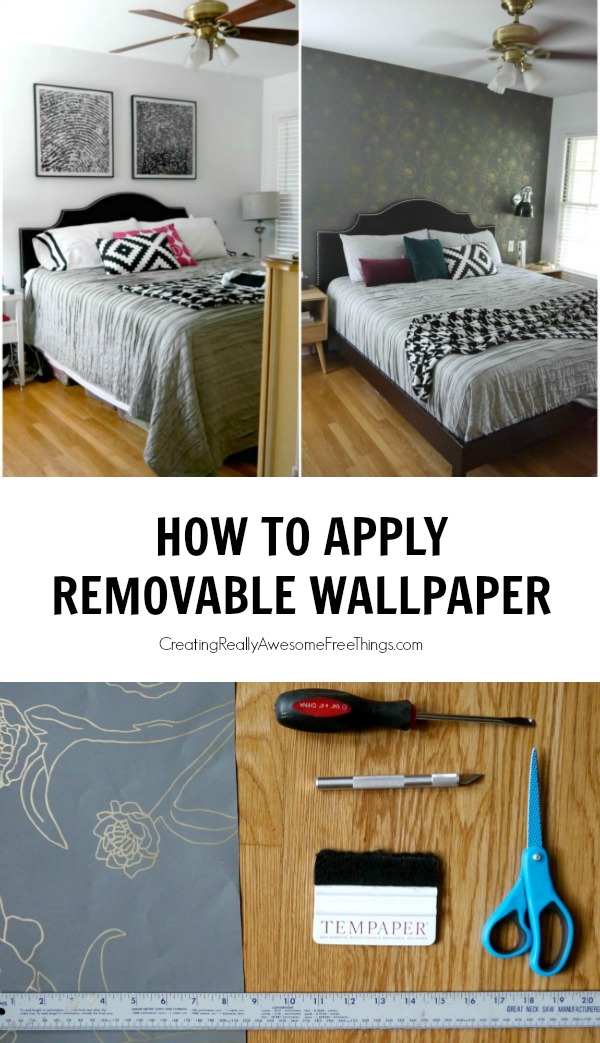

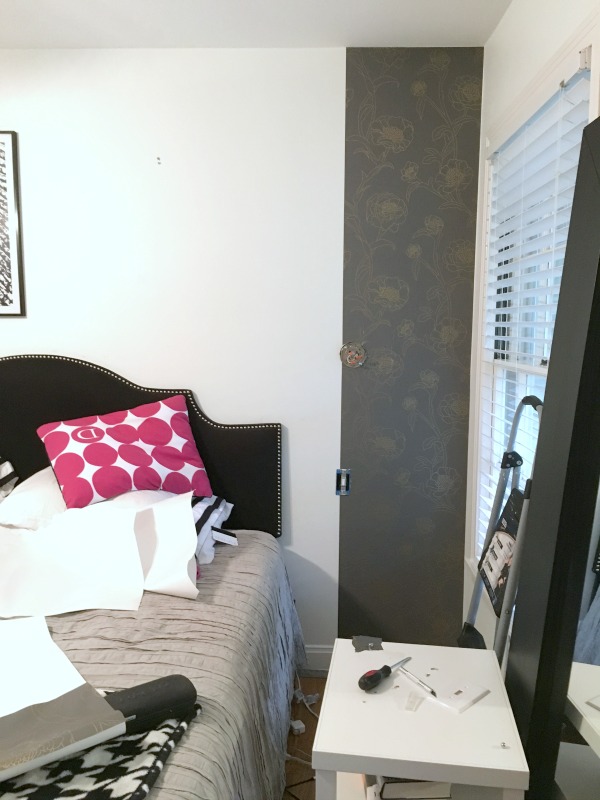
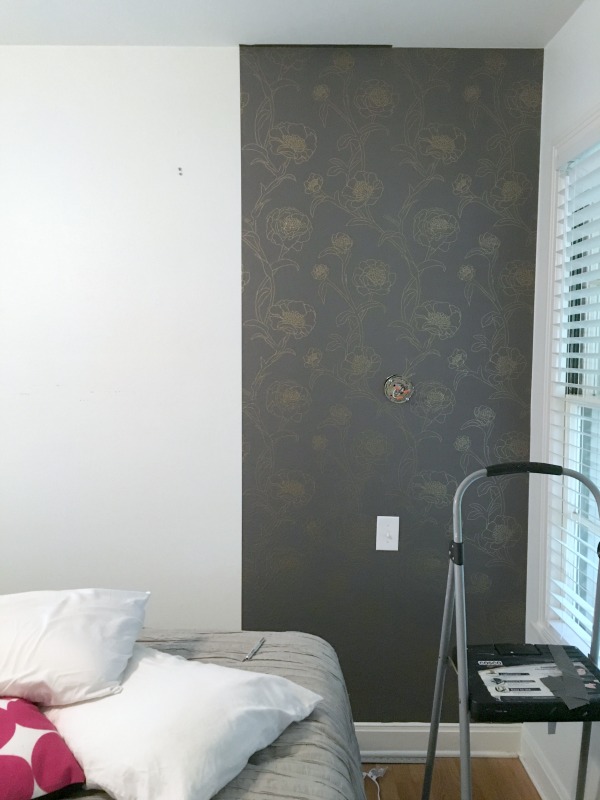
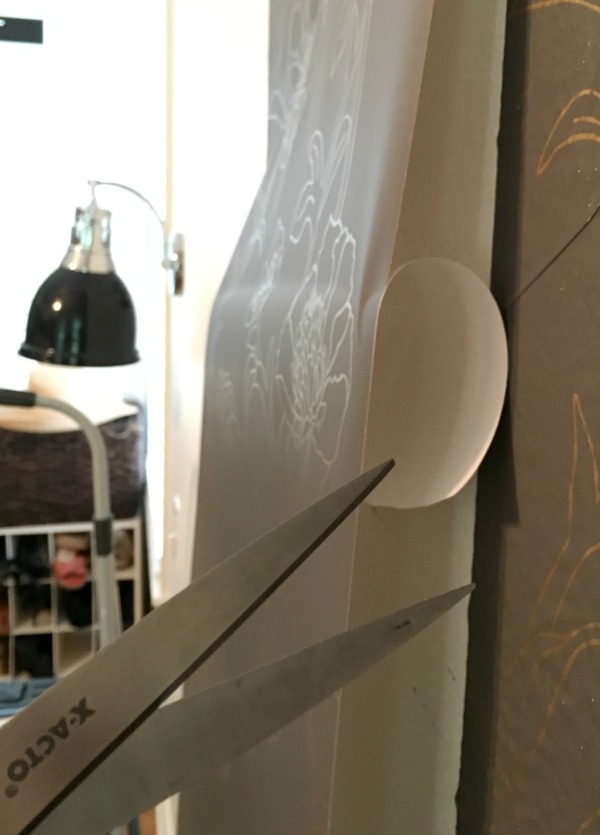
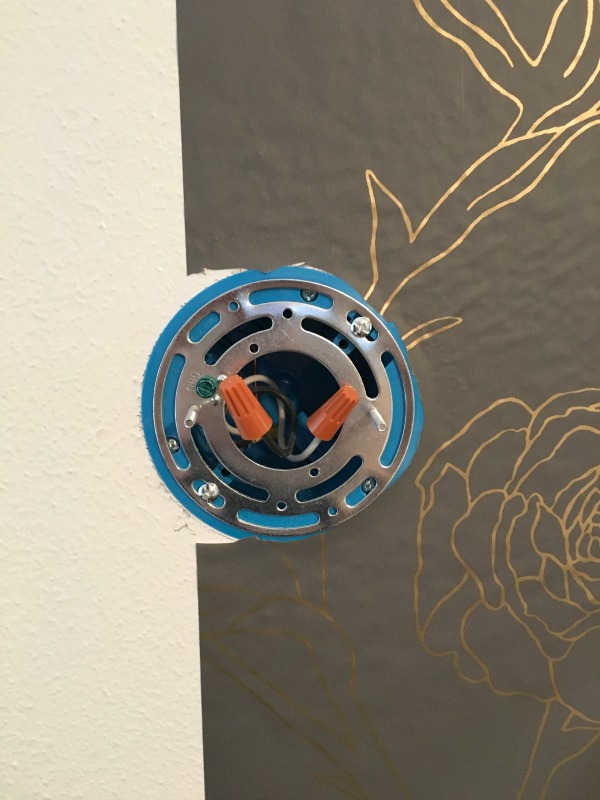
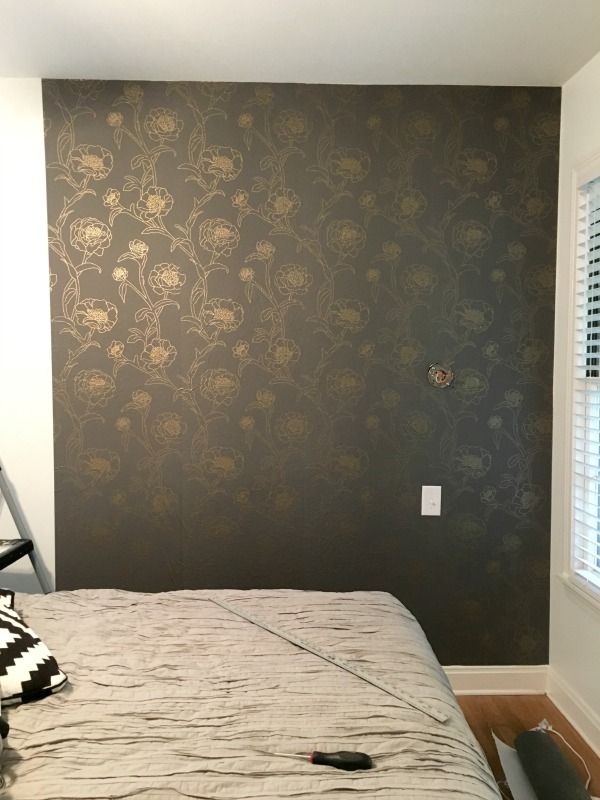




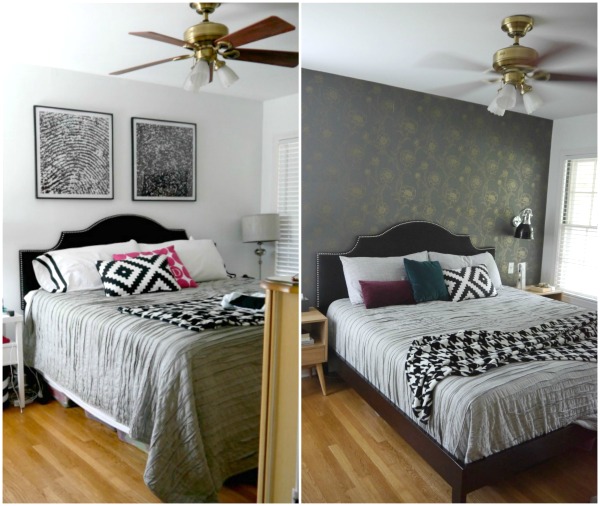
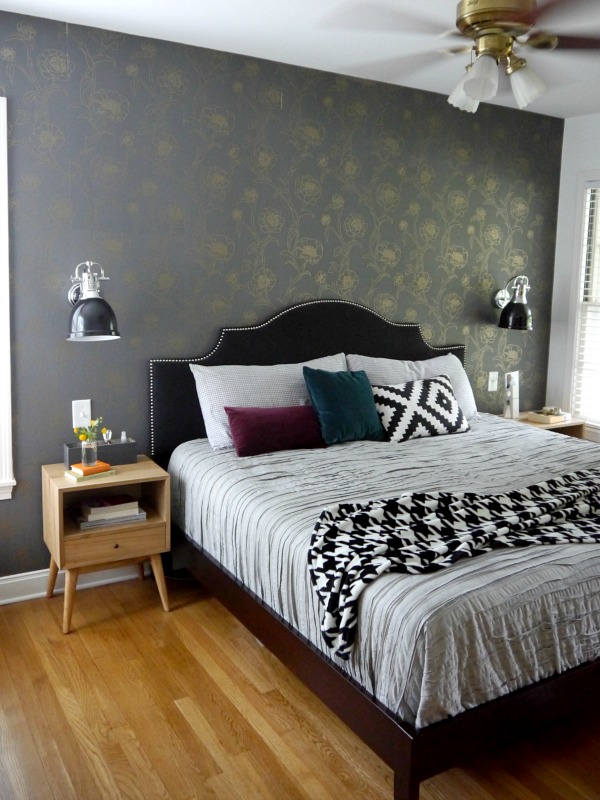

Leave A Reply!